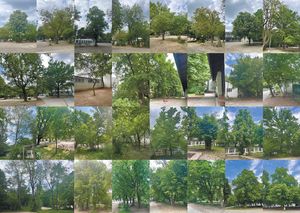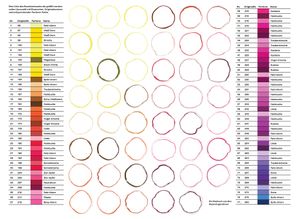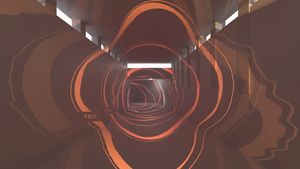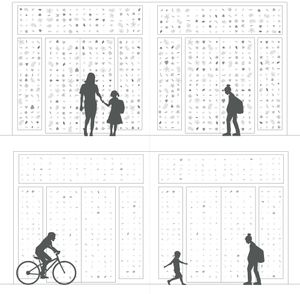Baumbestand
Ongoing
Baumbestandt_Baume_(c)Hopkins Shoplift-5
Baumbestand Proposal
Excerpts from the Proposal for the QUIVID Kunst am Bau Competition
In Brief:
An artwork which brings the tree population and the human population of Zielstattstraße 72-74 into concert with one another. Drawing on participatory ideas of Social Sculpture and the storytelling approach of Multispecies Studies, this is a proposal for a series of interlinked connected graphic forms which are co-created by the school community and playfully remember the former trees of the site.
Background:
The school buildings currently, at Zielstattsraße 72-74 will be knocked down and replaced by a new building with double the capacity. This construction process tries to be as ecological as possible; building materials will be salvaged and reused and the footprint of the building has been minimised. Nevertheless 105 trees will have to be cut down to make space for the new building.
Project:
This artwork commemorates the tree population of Zielstattsraße 72-74, and ensures that they continue to live in the imagination and day-to-day lives of the human population of the school. I propose a series of graphic representations of the 105 felled trees, which extend across the bicycle ramp, the bicycle cellar, the entrance halls and the floors of the school and the courtyard. These representations of the tree rings, leaves and seeds are interlinked with one another, thematically and formally, giving the work a playful, treasure-hunt feel. Their content is informed by participatory workshops with the students and staff of the school.
Each of the 105 trees will be assigned a particular colour and will be represented in the bicycle area. The ramp/tunnel will be painted with 59 individual tree ring motifs. Each motif extends across the walls, ceiling and floor of the tunnel as an anamorphic image - an image which can only be seen as undistorted from one particular position. Hence, a succession of tree ring motifs will come into view as the students cycle down the ramp. These motifs refer to specific rings/years from each tree which has been cut down. When the students enter the bicycle cellar, they will encounter the remaining 46 tree rings painted on the individual concrete pillars.These pillars will feature small anecdotes about each tree in question which students can read as they lock up their bicycle.
The trees further extend their presence into the school upstairs. The glass panels of the exterior and interior doors to the entrance halls are etched with leaves and seeds from the former trees and will be subtly marked with a small colourful dot corresponding to the tree in question. Furthermore, on the floors of the school and the courtyard outside coloured ring motifs will mark the precise points where each of the 105 trees formerly stood.

Baumbestandt_Baume_(c)Hopkins Shoplift-5
To sum up: This artwork tries to remember the former trees of this site with a playful and participatory approach. The graphic works encourage a degree of visual and spatial interaction and the content of the work itself is co-produced with students and staff. I hope that this approach enables the school community to not only be invested in the project, but to regularly rediscover new facets and elements of the work.
Workshops
A series of workshops are planned to meaningfully include students and staff in co-producing this participatory artwork. The possibility of these workshops has been discussed with art teachers from the Grundschule and Mittelschule of the current school and the idea has been positively received. The workshops draw on external expertise from ecologists, art educators and intercultural mediators.
Workshop I - Experiencing, feeling and describing the trees:
Led by a Multispecies scholar/artist - a field of study that explores the enmeshed existences of all species (including humans)
Students are shown techniques of “passionate immersion” to make them attentive to how their daily school life is connected with the tree population
Short stories and anecdotes about the trees are developed which will be displayed on the pillars of the bicycle cellar
Workshop II - Seeing and drawing the trees
Led by a graphic artist/illustrator to guide students in techniques of close observation and line-drawing.
Students select and draw leaves and seeds from the trees which will be cut down
Drawings of leaves and seeds will be produced, which will be digitised, vectorised and engraved on the glass doors of the entrance halls
Workshop III - Caring for the trees
Led by a guerilla gardener - practitioners who explore the political potential of alternative gardening
Students are shown how to plant the seeds collected from the trees which will be cut down, and possible/appropriate sites for them to grow
Students document the gradual growth of these seeds into trees as ongoing personal projects
Workshop IV - Deciphering the tree rings
Led by a dendrochronologist - scientists who study tree ring growth
Staff will be shown how to read the vast amount of information contained within tree rings (from climate information to traces of stellar activity)
Important rings/years will be selected from the trunks of each of the felled trees. These ring motifs will be painted in the bicycle ramp and cellar
Original sections from the tree trunks themselves will be installed at the original site of each tree

Baumbestandt_Baumkasteter_(c)Hopkins Shoplift-1
The Bicycle Ramp
The 80 metre long bicycle ramp enables students to cycle their bikes into the underground cellar. Hence, the viewer for an artwork in the ramp/tunnel is a moving viewer. The ramp/tunnel will be painted with tree ring motifs covering the walls, ceiling and floor of the tunnel. These motifs are anamorphic images, images which appear to be distorted but which resolve from one particular perspective. As students cycle down the ramp, a succession of tree rings will become legible to them.
The ramp/tunnel will be painted with 59 tree ring motifs. These motifs refer to the actual tree rings of the trees which have been felled and will be selected in Workshop IV with the staff members. Each tree ring motif has a particular number and colour which refer to the list of the tree population of Zielstattstraße 80-90 (See pp ??)
Cellar
The bicycle cellar is a 900 square metre underground room with capacity to store 500 bicycles. The ceiling is supported by 46 concrete pillars, distributed throughout the room. Each of these pillars will represent one of the 46 trees which has been felled. These pillars will be painted and inscribed with a very short anecdote about the tree, co-developed with students in Workshop I. As students lock up their bikes, they can glance up and, in a few seconds, read about one of the trees which used to live on this site.
Each pillar has a particular number and colour which refer to the list of the tree population of Zielstattstraße 72-74
The Entrance Halls
The entrance halls to the Grundschule, Mittelschule and Haus für Kinder are fronted by internal and external glass doors/windows which measure 3.74m high by 7.75m wide. These glass doors will be engraved with life-sized leaf motifs (external doors) and seed motifs (internal doors). The motifs will be based on line-drawings of leaves and seeds produced by the students in Workshop II. Students would see their artwork on the school doors as they come into school every day.
Floors
Stainless steel numbers will be embedded in the ground throughout the building and grounds. They mark the individual locations of the felled trees. These inlays correspond to the numbering of the tree ring motifs in the ramp and the columns in the basement. This connection with other areas in the building creates a networked, playful dimension to the work.

Baumbestandt_Tunnel Visualisation_(c)Hopkins Shoplift Liftinger-2
download text as PDF

